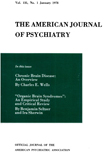THE CENTRAL MECHANISM OF THE EMOTIONS
Abstract
Thus we arrive at the conclusion that it is not possible to refer emotional reactions to a single circumscribed nucleus within the diencephalon or to its connections with the frontal lobes, but that there exists a multiple representation of this function. Following the elimination of one or two of these circuits others are able to compensate for the loss. As far as our present experience permits us to localize this function the following systems seem to play a part: (a) the connections of the dorsomedial nuclei with the frontal association areas, (b) connections of the anterior nuclei with the cingulate gyrus, (c) connections of the hypothalamus with the frontal lobe, (d) intradiencephalic connections chiefly between the dorsomedial nuclei and the hypothalamus, perhaps also between the anterior nuclei and the mammillary bodies. (Fig. 3.)
For the systems a, b, and d fibers in either direction have been demonstrated anatomically; centrifugal connections between frontal lobe and hypothalamus probably synapse in the septum pellucidum (Wallenberg) and in the zona incerta (Clark). Centripetal connections between the hypothalamus and frontal lobe are possible by way of the dorsomedial nucleus.
It should be emphasized that in enumerating these circuits we do not wish to submit a definite "new theory" of emotions but only a preliminary working hypothesis that may help to explain our findings, a hypothesis that may be subject to modifications in the light of further observations.
Access content
To read the fulltext, please use one of the options below to sign in or purchase access.- Personal login
- Institutional Login
- Sign in via OpenAthens
- Register for access
-
Please login/register if you wish to pair your device and check access availability.
Not a subscriber?
PsychiatryOnline subscription options offer access to the DSM-5 library, books, journals, CME, and patient resources. This all-in-one virtual library provides psychiatrists and mental health professionals with key resources for diagnosis, treatment, research, and professional development.
Need more help? PsychiatryOnline Customer Service may be reached by emailing [email protected] or by calling 800-368-5777 (in the U.S.) or 703-907-7322 (outside the U.S.).



